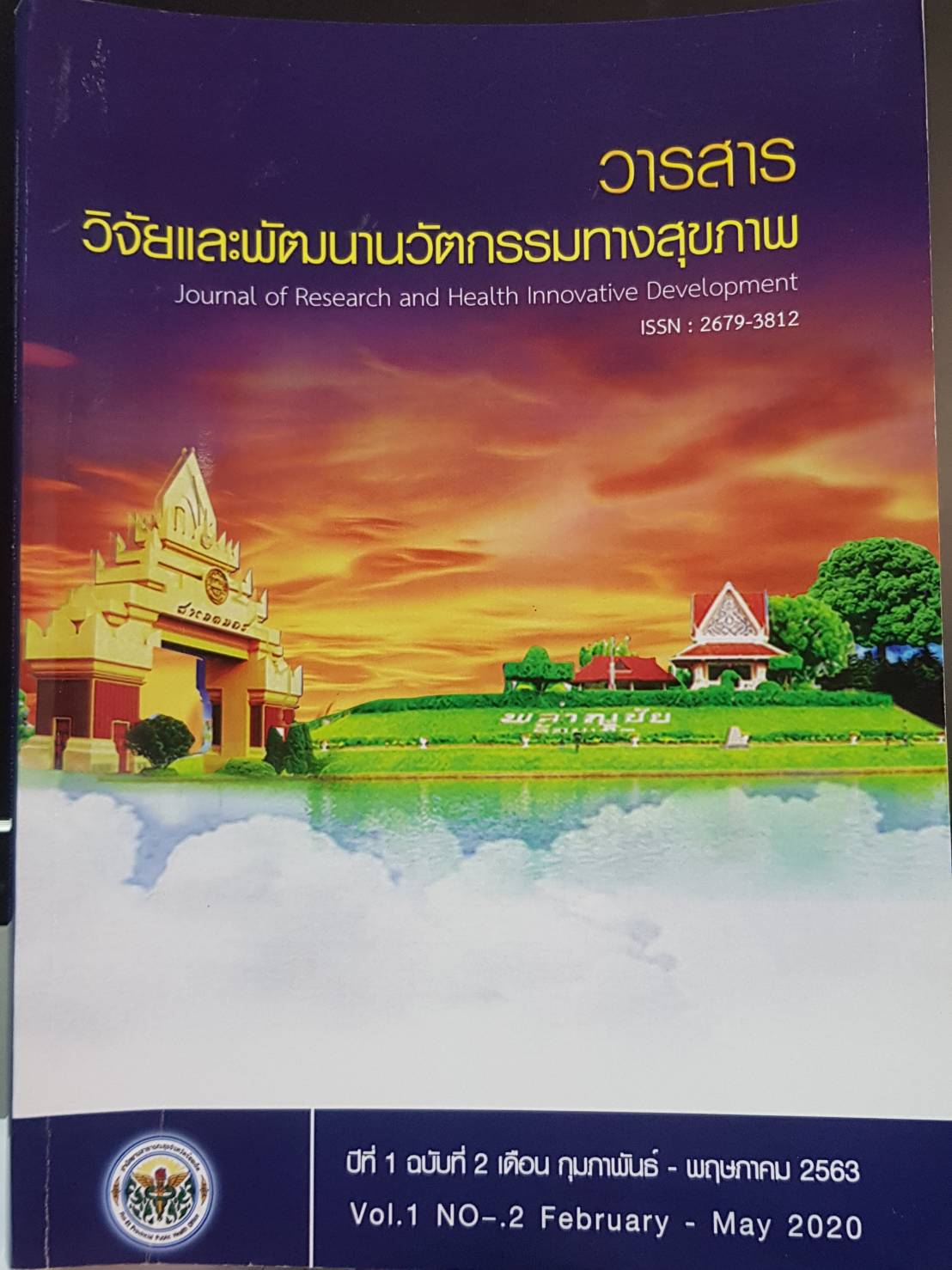Outcome of the Group Activities and Health Belief Model to Self-care Behaviors with Pre-diabetes in Roi-Et
Keywords:
Human resource development, Integrity & Transparency AssessmentAbstract
Purposes: To study an operating conditions, model of develop, and evaluate operational model of integrity & transparency assessment.
Design: Action research
Materials and methods: 25 of sample consisted were workers who will be include and exclude from a screening and screening criteria. Data were collected by using questionnaires. Data analysis was done by using univariate analysis and multiple a analysis at a confidence of 95% CI with a statistical significance of .05
Main findings: Four levels of new intervention model were suitable for workers. The first step was a problem analysis, content selection, organizing learning experiences, and evaluation. When using the model, it was found that after development, Internal integrity and transparency have perceived duty performance, power, government assets, and tackling corruption increased when compared with before development with statistical significance but budget was not significance. External integrity and transparency was perceived overall at the highest level (Mean = 3.37, SD. = 0.08).
Conclusion and recommendations: The operational model obtained from this research has resulted in increased perceived among workers, so it should be used in personnel development for ITA.
References
วารสารเศรษฐศาสตร์. มหาวิทยาลัยธรรมศาสตร์. 2559. 21.
2.Transparency International. (2011). The Current Corruption Perceptions Index.
[ออนไลน์], เข้าถึงได้จาก: http://www.transparency.org/policy_research/surveys_indices/cpi.
(2020, 23 March).
3.สำนักงาน ป.ป.ช.. คู่มือการประเมินคุณธรรมและความโปร่งใสในการดำเนินงานของ
หน่วยงานภาครัฐ (Integrity and Transparency Assessment: ITA) ประจำปีงบประมาณ พ.ศ. 2561.
ศูนย์ประเมินคุณธรรมและความโปร่งใสของหน่วยงานภาครัฐ สำนักงาน ป.ป.ช.. 2561.
4. Deming, W. Edwards. Out of the Crisis. MIT Press. 1986.
5.ทิศนา แขมมณี และนงลักษณ์ วิรัชชัย. การวิจัยปฏิบัติการระดับชั้นเรียนและระดับโรงเรียน: แนวทางการวิจัยและการสังเคราะห์งานวิจัย. กรุงเทพฯ : สำนักงานกองทุนสนับสนุนการวิจัย (สกว.). 2546.
6.นงเยาว์ สมพิทยานุรักษ์, ประพันธ์ศิริ สุเสารัจและรจนา คลี่ฉายา. การพัฒนารูปแบบการสอนแนะ
เพื่อพัฒนาสมรรถนะครูพยาบาล. วารสารพยาบาลตำรวจ.2559; 8(1): มกราคม – มิถุนายน: 160-9.
7.นพวรรณ ธีระพันธ์เจริญ. การพัฒนาศักยภาพการวิจัย R2R ของบุคลากรสาธารณสุขในจังหวัดพระนครศรีอยุธยา. วารสารวิจัยและพัฒนา วไลยอลงกรณ์ ในพระบรมราชูปถัมภ์ สาขามนุษยศาสตร์และสังคมศาสตร์. 2559; 11(2): พฤษภาคม – สิงหาคม: 205-214.
8. แรกขวัญ สระวาสี และสงกรานต์ กัญญมาสา. ผลของการพัฒนางานประจำสู่งานวิจัยต่อการพัฒนา
สมรรถนะผู้ปฏิบัติงานด้านภารกิจสนับสนุนการดำเนินงานส่งเสริมสุขภาพ กรมอนามัย
กระทรวงสาธารณสุข. วารสารวิชาการสาธารณสุข.2562; 28 (3): พฤษภาคม – มิถุนายน: 449-508.
9.วีรชัย บริบูรณ์ . การพัฒนาสมรรถนะหลักของบุคลากรโดยการมีส่วนร่วมของผู้บังคับบัญชา.
วารสารวิชาการสาธารณสุข. 2559; 25(5): กันยายน – ตุลาคม: 872-7.
10.ภัทรสุดา กันใจแก้ว นิลุบล วรวิชญ์ธนเลิศ พลกฤต รักจุล และสิริวิมล อินผ่อง. การประเมิน
คุณธรรมและความโปร่งใสในการดำเนินงานขององค์กรปกครองส่วนท้องถิ่น อำเภอปัว จังหวัด
น่าน. วารสารสังคมศาสตร์วิชาการ.2560; ฉบับ10 (พิเศษ): กรกฏาคม – ตุลาคม: 106-120.
11. Taba, Hilda. Curriculum development : theory and practice. New York: Brace & World. 1962.
12. Tyler, Ralph W. Basic principles of curriculum and instruction. Chicago: University of Chicago Press. 1970.
Downloads
Published
How to Cite
Issue
Section
License
Copyright (c) 2022 Roi-Et Provincial Public Health office

This work is licensed under a Creative Commons Attribution-NonCommercial-NoDerivatives 4.0 International License.
บทความที่ได้รับการตีพิมพ์เป็นลิขสิทธิ์ของ สำนักงานสาธารณสุขจังหวัดร้อยเอ็ด
บทความที่ลงตีพิมพ์ในวารสารวิจัย และพัฒนานวัตกรรมทางสุขภาพ สํานักงานสาธารณสุขจังหวัดร้อยเอ็ด ถือเป็น ผลงานวิชาการ งานวิจัย วิเคราะห์ ตลอดจนเป็นความเห็นส่วนตัวของผู้ประพันธ์ กองบรรณาธิการไม่จําเป็นต้องเห็น ด้วยเสมอไป และผู้ประพันธ์จะต้องรับผิดชอบต่อบทความของตนเอง


